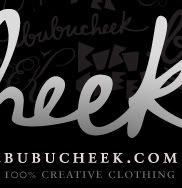It's not as if Clinton Portis can extend his career with plastic surgery, a facelift like one of those actress-creatures who look like they sleep in crypts. There is no tricking up his sore legs with cosmetics. Time treats NFL running backs more cruelly than arguably any other professionals. How would you like to be "aging" at 29?
It's not over for Portis, who celebrated his 29th birthday Sept. 1, but it's getting there. A groin injury has forced him to cede his starting job to Ryan Torain, the 24-year-old with the hydraulic pumps for knees, and it may be difficult for him to get it back. Coach Mike Shanahan said Wednesday that Portis will be out four to six weeks.
But anyone who thinks Portis is easily replaced, who thinks this isn't a huge loss, is forgetting just how much he does for the Washington Redskins, not only as a runner but a self-sacrificing blocker. At the bottom of the conundrum that is Portis - the absurd charm, the apparent casualness, the uneven practice attendance - is one of their most physically fierce players.
NFL statistics suggest just how disposable backs are. Their average career span is just 2.5 years, and even the great ones seldom last a decade. In the 90-year history of the league, just 25 men over the age of 30 have run for 1,000 yards in a season. There is no mystery as to why. It's a simple matter of physics: mass times acceleration, and the damage those forces do to a body. Portis is in his ninth season. By my count that means he has taken somewhere around 6,500 hits. Scientific study suggests they're the most severe blows any player on the field suffers.
We often talk about the pounding that NFL running backs take, and recognize it viscerally, but we don't quantify it. A look at hard numbers explains why Portis has been banged up these last couple of years, and why he has broken fewer long runs than he used to. It also perhaps explains his famous reluctance to practice every day, which now seems more smart than lazy, given what researchers are learning about long-term health risks from repetitive blows.
A defensive back's speed, say 4.5 seconds in the 40-yard dash, combined with his mass can produce up to 1,600 pounds of tackling force. Recently scientists have begun attaching sensors to players' helmets and equipment, to measure the effects of such impacts on their bodies, especially concussions and repetitive brain injuries.
The Simbex Corporation, funded by the National Institutes of Health, has conducted four studies of college football and hockey players, including some at Virginia Tech. Data showed players' heads accelerated inside of their helmets from 30 to 60 Gs, with some blows up to 150 Gs. It also revealed that running backs suffered the most severe hits in terms of magnitude.
"Running backs take a lot of impacts to the front of their heads," says Simbex President Rick Greenwald. "Their exposure and the severity of the impacts are the highest of all positions."
Greenwald refused to extrapolate on what that means for even bigger and faster NFL players, because thus far, none have worn sensors. Simbex researchers hope to wire them for data in the next year.
But anyone can do some basic math and estimate how much punishment Portis has absorbed. He has played in 112 regular season games in his NFL career. There are conservatively 60 offensive snaps in an average game. He has carried the ball 2,225 times, and caught 246 passes, and that doesn't count his blocking assignments. Add weekly practices - though his attendance to those has sometimes been light - as well as minicamps, and training camps, and don't forget his college career at Miami, either, where he had 440 carries.
According to Bob Stern, a neurologist and co-director of the Center for the Study of Traumatic Encephalopathy at Boston University, some players may be enduring up to 1,000 or more hits per year, between games and practices. Running backs don't experience "the frequent sub-concussive blows" that linemen do, but "when they get hit, they get really hit," Stern says, and as a much-used blocker, Portis has been hit both ways.
In that context, it's a wonder Portis was still the Redskins' leading rusher before he got hurt, and a credit to him. At one point in 2008 Portis had injuries to his knee, hips and ribs, as well as scabs on his elbows and his shins.
"If you take common folk and hit them across the arm with a bat, they're going to take the proper time to rest," he said at the time. " . . . You get four days to recover being hit by a bat. And then you get hit by another bat. Common folk get hit by a bat, they might not go to work for two weeks."
Portis has earned some criticism for divalike behavior, like his occasional ingratitude to his linemen and quarterbacks, and for playing overweight. But lack of toughness isn't one of his failings. Overall, he's probably given as much to the Redskins physically as he has taken financially. If you're inclined to resent his salary of almost $7.2 million this year, try to remember that. Even former coach Jim Zorn, who was often frustrated by him, said that when Portis is on the field, "Your head better be on a swivel. Somebody is gonna get knocked down."
Remember that in four seasons, he has had at least 320 carries. Remember that he ran for a club-record 1,516 yards in 2005, alternately avoiding tacklers with suave cuts and knocking them down like bowling pins. Remember how he dislocated his shoulder in a preseason game with the Cincinnati Bengals, when launched into a tackle, trying to stop an interception return. Remember how just two weeks ago against the Houston Texans he raced half the length of the field to explode on a block and open a pathway for Fred Davis, resulting in a 62-yard play.
For us spectators, the violence of the NFL is inevitably abstract, no matter how close our seats are to the field or how vivid the telecast. We view and feel the game at a remove, with small sense of what the men on the field experience.
Ever been rear-ended and hit your head on a windshield? Try enduring it 60 times in a row, once every minute or so.
"It can be the equivalent sometimes of driving a car into a brick wall," Stern says. "We're talking about 50 to 100-plus G force."
If Portis is able to return to the field this season, remember that. And appreciate every last yard he gives you.
Click here to order Clinton Portis’s proCane Rookie Card.

(washingtonpost.com)



